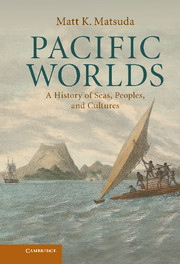Book contents
- Frontmatter
- Contents
- Illustrations
- Maps
- Acknowledgments
- Map
- Introduction: Encircling the ocean
- 1 Civilization without a center
- 2 Trading rings and tidal empires
- 3 Straits, sultans, and treasure fleets
- 4 Conquered colonies and Iberian ambitions
- 5 Island encounters and the Spanish lake
- 6 Sea changes and spice islands
- 7 Samurai, priests, and potentates
- 8 Pirates and raiders of the Eastern seas
- 9 Asia, America, and the age of the galleons
- 10 Navigators of Polynesia and paradise
- 11 Gods and sky piercers
- 12 Extremities of the Great Southern Continent
- 13 The world that Canton made
- 14 Flags, treaties, and gunboats
- 15 Migrations, plantations, and the people trade
- 16 Imperial destinies on foreign shores
- 17 Traditions of engagement and ethnography
- 18 War stories from the Pacific theater
- 19 Prophets and rebels of decolonization
- 20 Critical mass for the earth and ocean
- 21 Specters of memory, agents of development
- 22 Repairing legacies, claiming histories
- Afterword: World Heritage
- Notes
- Index
8 - Pirates and raiders of the Eastern seas
Published online by Cambridge University Press: 05 June 2012
- Frontmatter
- Contents
- Illustrations
- Maps
- Acknowledgments
- Map
- Introduction: Encircling the ocean
- 1 Civilization without a center
- 2 Trading rings and tidal empires
- 3 Straits, sultans, and treasure fleets
- 4 Conquered colonies and Iberian ambitions
- 5 Island encounters and the Spanish lake
- 6 Sea changes and spice islands
- 7 Samurai, priests, and potentates
- 8 Pirates and raiders of the Eastern seas
- 9 Asia, America, and the age of the galleons
- 10 Navigators of Polynesia and paradise
- 11 Gods and sky piercers
- 12 Extremities of the Great Southern Continent
- 13 The world that Canton made
- 14 Flags, treaties, and gunboats
- 15 Migrations, plantations, and the people trade
- 16 Imperial destinies on foreign shores
- 17 Traditions of engagement and ethnography
- 18 War stories from the Pacific theater
- 19 Prophets and rebels of decolonization
- 20 Critical mass for the earth and ocean
- 21 Specters of memory, agents of development
- 22 Repairing legacies, claiming histories
- Afterword: World Heritage
- Notes
- Index
Summary
Scrolls and paintings from the sixteenth century show them coming. Along the China coast, the seaborne gangs were marauders, murderers, kidnappers, and extortionists, terrorizing villages, stealing children and women. Accounts indicate that they arrived in swarms of boats as raiding parties numbering hundreds as they struck along coastal settlements, burning and pillaging. Storehouses were looted, farmers murdered, graves robbed. Victims were tortured, scalded, and disemboweled, sometimes for entertainment. Chinese troops serving provincial authorities were helplessly overmatched and fled; official residences were ransacked and burned, boats and ships confiscated.
The marauders, called kaizoku or wako, were societies unto themselves, often bound by loose feudal codes and chiefs, occupying coastal settlements beyond the reach of imperial or prefectural authority. Some established formidable outposts on small islands and ruled as local lords; many lived around inlets and mazes of sandbars under no political control. Originally Japanese from coastal provinces under the nominal authority of reckless daimyo, they preyed on Korean and Chinese merchants. Historically, they were in fact from no single country. Dominant Japanese clans would gradually be organized by Chinese raiders, with crew from across East and Southeast Asia.
- Type
- Chapter
- Information
- Pacific WorldsA History of Seas, Peoples, and Cultures, pp. 103 - 113Publisher: Cambridge University PressPrint publication year: 2012



